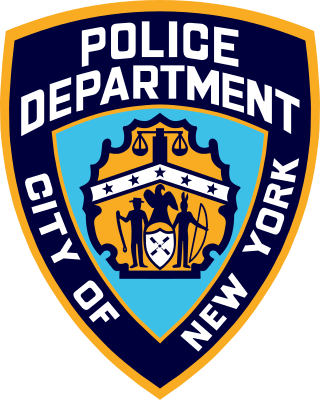
The New York City Police Department (NYPD), officially the City of New York Police Department, is the primary law enforcement agency within New York City. Established on May 23, 1845, the NYPD is the largest, and one of the oldest, municipal police departments in the United States.
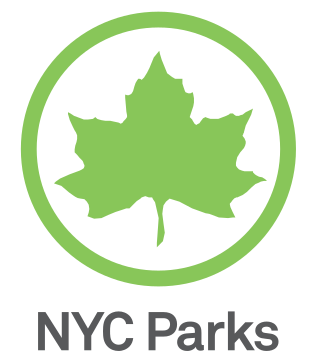
The New York City Department of Parks and Recreation, also called the Parks Department or NYC Parks, is the department of the government of New York City responsible for maintaining the city's parks system, preserving and maintaining the ecological diversity of the city's natural areas, and furnishing recreational opportunities for city's residents and visitors.
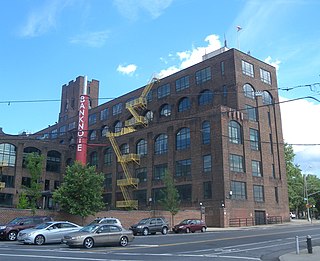
Hunts Point is a neighborhood located on a peninsula in the South Bronx of New York City. It is the location of one of the largest food distribution facilities in the world, the Hunts Point Cooperative Market. Its boundaries are the Bruckner Expressway to the west and north, the Bronx River to the east, and the East River to the south. Hunts Point Avenue is the primary street through Hunts Point.

Longwood is a mixed-use neighborhood in the southeast Bronx in New York City. Its boundaries, starting from the north and moving clockwise are East 167th Street to the north, the Bronx River and the Bruckner Expressway to east, East 149th Street to the south, and Saint Anns Avenue to the west. Southern Boulevard is the primary thoroughfare through Longwood.

The New York City Police Department Auxiliary Police is a volunteer reserve police force which is a subdivision of the Patrol Services Bureau of the New York City Police Department. Auxiliary Police Officers assist the NYPD with uniformed patrols, providing traffic control, crowd control, and other services during major events.
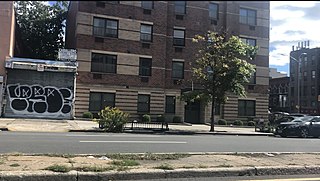
Crime rates in New York City have been recorded since at least the 1800s. The highest crime totals were recorded in the late 1980s and early 1990s as the crack epidemic surged, and then declined continuously from around 1990 throughout the 2000s. As of 2023, New York City has significantly lower rates of gun violence than many other large cities. Its 2022 homicide rate of 6.0 per 100,000 residents compares favorably to the rate in the United States as a whole and to rates in much more violent cities such as St. Louis and New Orleans.
The New York City Police Department's Medal for Valor is the department's third highest medal. It is conferred upon police officers for acts of outstanding personal bravery intelligently performed in the line of duty at imminent personal hazard to life under circumstances evincing a disregard for personal consequences.

The 9th Precinct of the New York City Police Department is a police precinct in New York City. It is one of 77 NYPD patrol areas. Its boundaries are East 14th Street to the north, Broadway to the west, East Houston Street to the south and the East River to the east. It is three-quarters of a square mile in area, and it covers the neighborhoods commonly referred to as the East Village, Alphabet City, Loisaida and NoHo.
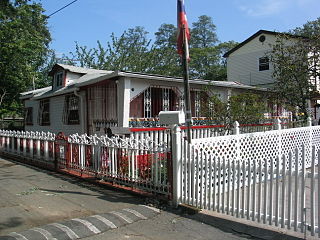
Clason Point is a peninsula and a neighborhood in the East Bronx, New York City. The area includes a collection of neighborhoods including Harding Park, and Soundview. Its boundaries, starting from the north and moving clockwise, are: Lafayette Avenue to the north, White Plains Road/Pugsley Creek Park to the east, the East River to the south, and the Bronx River to the west.

The New York City Housing Authority Police Department was a law enforcement agency in New York City that existed from 1952 to 1995, which was then merged into the NYPD. The roots of this organization go back to 1934 and the creation of the New York City Housing Authority (NYCHA). New York City Mayor Fiorello H. La Guardia authorized the hiring of security guards to patrol the city's public housing buildings. These guards eventually were trained and became the first officers of the Housing Police, which was officially created in 1952. The Housing Police, along with the New York City Transit Police, was merged into the New York City Police Department in 1995 by New York City Mayor Rudy Giuliani and continues today as the Housing Bureau

The Emergency Service Unit (ESU) is part of the Special Operations Bureau of the New York City Police Department. The unit provides specialized support and advanced equipment to other NYPD units. Members of ESU are cross-trained in multiple disciplines for police, medical, and rescue work.

The New York City Police Department (NYPD) is structured into numerous bureaus and units. As a whole, the NYPD is headed by the Police Commissioner, a civilian administrator appointed by the Mayor, with the senior sworn uniformed officer of the service titled "Chief of Department". The Police Commissioner appoints the First Deputy Commissioner as the department's second-in-command and the Chief of Department as the department's highest ranking uniformed officer. The commissioner also appoints a number of deputy and assistant commissioners who do not have operational command and are solely for support and administrative function. The department is divided into twenty bureaus, six of which are enforcement bureaus. Each enforcement bureau is further subdivided into sections, divisions, and units, and into patrol boroughs, precincts, and detective squads. Each bureau is commanded by a bureau chief. There are also a number of specialized units that are not part of any of the bureaus and report to the Chief of the Department.
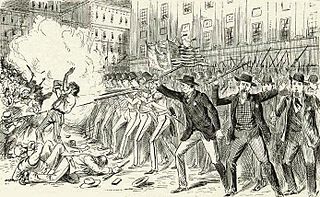
The New York City Police Department (NYPD) originates in the Government of New York City attempts to control rising crime in early- to mid-19th-century New York City. The City's reforms created a full-time professional police force modeled upon London's Metropolitan Police, itself only formed in 1829. Established in 1845, the Municipal Police replaced the inadequate night watch system which had been in place since the 17th century, when the city was founded by the Dutch as New Amsterdam.
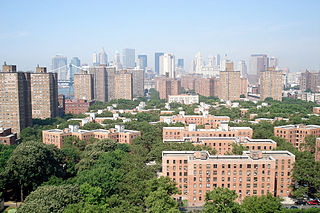
Vladeck Houses is a public housing development built and maintained by the New York City Housing Authority on the Lower East Side of Manhattan.

The Detective Bureau is one of 14 bureaus within the New York City Police Department and is headed by the three-star Chief of Detectives. The Detective Squad was formed in 1857 with the Detective Bureau later formed in 1882.
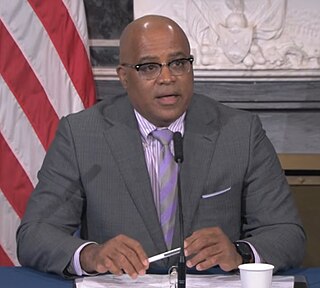
Philip Banks III is the former Deputy Mayor of New York City for Public Safety and a retired law enforcement officer who served as NYPD chief of department in 2013 and 2014. As Chief of Department, Banks oversaw all patrol and specialty units. He resigned in the midst of the investigations into the Eric Adams administration.
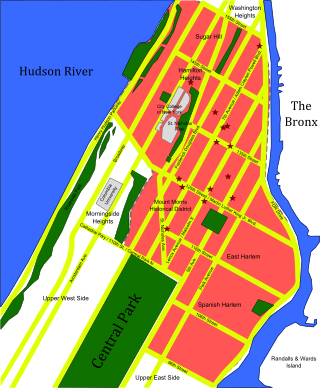
Greater Harlem, in the northern section of the New York City borough of Manhattan, has historically had high poverty and crime rates. Crime in Harlem is primarily related to illicit activities such as theft, robbery, drug trafficking and prostitution. Criminal organizations such as street gangs are responsible for a significant portion of crime, particularly violent crime. The leading cause of death among young black males in Harlem is homicide. According to a survey published in 2013 by Union Settlement Association, residents of East Harlem perceive crime as their biggest single concern. Greater Harlem has one of the highest violent crime rates in New York City despite significant declines from historic highs.
Akai Gurley, a 28-year-old black man, was fatally shot on November 20, 2014, in Brooklyn, New York City, United States, by a New York City Police Department officer. Two police officers, patrolling stairwells in the New York City Housing Authority (NYCHA)'s Louis H. Pink Houses in East New York, Brooklyn, entered a pitch-dark, unlit stairwell. Officer Peter Liang, 27, had his firearm drawn. Gurley and his girlfriend entered the seventh-floor stairwell, fourteen steps below them. Liang fired his weapon; the shot ricocheted off a wall and fatally struck Gurley in the chest. A jury convicted Liang of manslaughter, which a court later reduced to criminally negligent homicide.

The New York Police Department's Strategic Response Group (SRG) is a unit of the New York City Police Department (NYPD) formed in 2015 for all counter-terrorism and the policing of political protests.
Juanita N. Holmes is an American police officer and administrator who is the Commissioner of the New York City Department of Probation. Prior to that role, Holmes was the Chief of the Training Bureau in the NYPD. Before the appointment of Keechant Sewell as New York City Police Commissioner on January 1, 2022, Holmes was the highest-ranking female in the NYPD.
















